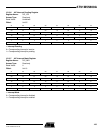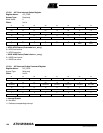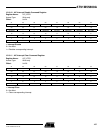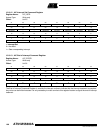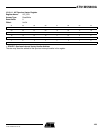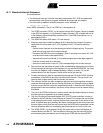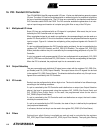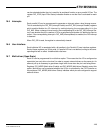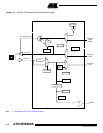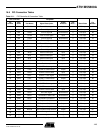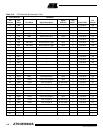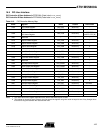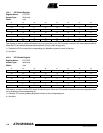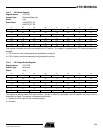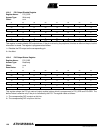
113
1745D–ATARM–04-Nov-05
AT91M55800A
can be selected whether the pin is used for its peripheral function or as a parallel I/O line. The
register PIO_IFSR (Input Filter Status) indicates whether or not the filter is activated for each
pin.
16.5 Interrupts
Each parallel I/O can be programmed to generate an interrupt when a level change occurs.
This is controlled by the PIO_IER (Interrupt Enable) and PIO_IDR (Interrupt Disable) registers
which enable/disable the I/O interrupt by setting/clearing the corresponding bit in the
PIO_IMR. When a change in level occurs, the corresponding bit in the PIO_ISR (Interrupt Sta-
tus) is set whether the pin is used as a PIO or a peripheral and whether it is defined as input or
output. If the corresponding interrupt in PIO_IMR (Interrupt Mask) is enabled, the PIO interrupt
is asserted.
When PIO_ISR is read, the register is automatically cleared.
16.6 User Interface
Each individual I/O is associated with a bit position in the Parallel I/O user interface registers.
Each of these registers are 32 bits wide. If a parallel I/O line is not defined, writing to the corre-
sponding bits has no effect. Undefined bits read zero.
16.7 Multi-driver (Open Drain)
Each I/O can be programmed for multi-driver option. This means that the I/O is configured as
open drain (can only drive a low level) in order to support external drivers on the same pin. An
external pull-up is necessary to guarantee a logic level of one when the pin is not being driven.
Registers PIO_MDER (Multi-driver Enable) and PIO_MDDR (Multi-driver Disable) control this
option. Multi-driver can be selected whether the I/O pin is controlled by the PIO Controller or
the peripheral. PIO_MDSR (Multi-driver Status) indicates which pins are configured to support
external drivers.



